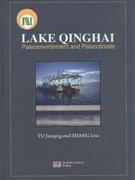扫一扫
关注中图网
官方微博
本类五星书更多>
-
>
宇宙、量子和人类心灵
-
>
(精)BBC地球故事系列-星际旅行
-
>
从一到无穷大
-
>
图说相对论(32开平装)
-
>
一本有趣又有料的化学书
-
>
刘薰宇的数学三书:原来数学可以这样学全3册
-
>
光学零件制造工艺学
LAKE QINGHAI-Paleoenvironment and Paleoclimate 版权信息
- ISBN:9787030229090
- 条形码:9787030229090 ; 978-7-03-022909-0
- 装帧:一般胶版纸
- 册数:暂无
- 重量:暂无
- 所属分类:>>
LAKE QINGHAI-Paleoenvironment and Paleoclimate 内容简介
《青海湖古气候与古环境(英文版)》以青藏高原东北部六万.0以来的气候与环境演变为主要研究内容,以多学科方法研究获得了青海湖岩芯多项环境指标,并以此为依据,分析和论证了青海湖MIS3、MIS2、末次冰期向全新世过渡时期,以及全新世等各时段的水位与气候变化,及其与东亚季风演变的关联。
LAKE QINGHAI-Paleoenvironment and Paleoclimate 目录
1 Introduction1.1 Aim and scope1.2 Previous investigations1.2.1 1961-1962 expeditions to Lake Qinghai1.2.2 Sino-Swiss expedition in 19851.2.3 1987 drill-core project1.2.4 Post-1990 investigations1.3 Paleoclimate study of China: a brief review1.3.1 East Asian monsoon——the modem climate system1.3.2 East Asian paleomonsoon2 Geographic, Geological and Limnological Setting of Lake Qinghai2.1 Geological setting2.2 Geomorphological setting2.3 Geographic setting2.3.1 Climate2.3.2 Vegetation2.3.3 Rivers in the catchment2.4 Limnological setting2.4.1 Water chemistry2.4.2 Physical characteristics2.4.3 Biological characteristics2.5 Peripheral lakes2.5.1 Lake Erhai2.5.2 Lake Gahai2.5.3 Haiyan Bay2.5.4 Sand-Island Lake3 Investigation Methods3.1 Introduction3.2 Field investigation3.2.1 Seismic profiling3.2.2 Coring3.3 Laboratory investigation3.3.1 Radiometric dating3.3.2 Magnetic susceptibility: core logging3.3.3 Total organic carbon and total nitrogen, and C/N ratio3.3.4 Macrofossil indicator3.3.6 X-ray diffraction and scanning electron microscopy (SEM)3.3.7 Oxygen and carbon stable isotopes3.4 Notes on investigation methods4 Seismic Investigation, Lithologie Study of Sediment Cores and Radiometrie Dating4.1 Introduction4.2 Sub-bottom profiles from the 3.5 kHz seismic investigations4.3 Radiometric dating4.3.1 Radiocarbon dating and sedimentation rates4.3.2 pb dating and sediment accumulation rates4.4 Lithologic units4.4.1 Lithologic units of core Q14B4.4.2 Lithologic units of core Q 16C4.4.3 Core correlation and boundary description5 Lake Levels and Climate Change During the Holoeene5.1 Introduction5.2 Results and interpretations5.2.1 14C dated lithostratigraphy5.2.2 TOC, TN and C/N ratio5.2.3 TCC and carbonate mineral record5.2.4 Fossil seeds from rooted aquatic plant5.2.5 Ostracode shell stable-isotopic record5.2.6 Pollen record5.2.7 Magnetic susceptibility5.3 Holocene lake levels and climate reconstruction5.4 A correlation with proxy records from other studies5.5 Holocene climate variability of East Asia5.5.1 Early Holocene climate regime5.5.2 Mid-Holocene climate and Holocene Optimum5.5.3 Late Holocene climate5.5.4 Climate forcing and feedbacks during the Holocene5.6 Summary and conclusions6 Abrupt Changes in Climatic Conditions Across the Lateglacial/Holoeene Transitionon the NE Qinghai-Tibet Plateau6.1 Introduction6.2 Results from a multi-proxy investigation on cores Q14B and Q 16C6.2.1 Distinct lithostratigraphic units6.2.2 Paleobotanic evidence6.2.3 Core logs of magnetic susceptibility6.2.4 Carbonate content and mineralogical record6.2.5 Oxygen stable-isotopic record6.2.6 Total nitrogen content6.3 Reconstruction of lake levels and limnological conditions6.4 Abrupt shifts in hydro-climatic conditions6.5 Correlation with other paleoenvironmental records in China6.6 Conclusions7 Paleoenvironmental Signatures from Carbonate Minerals and Stable Isotopic Ratios from Lake Qinghai7.1 Introduction7.2 Modern carbonate environments7.3 Carbonate minerals in the sediment cores7.4 Lake Qinghai dolomite and inferred paleoenvironment7.4.1 Lithology, mineralogy, organic carbon and nitrogen, and isotopic composition7.4.2 Geochemical and paleoenvironmental conditions for the dolomite formation7.5 Brine evolution deduced from the carbonate mineral record7.5.1 Mg/Ca ratio7.5.2 Carbonate production and salinity7.6 Stable isotopic ratios and their covariance7.6.1 Isotopic covariance7.6.2 Isotope results from Lake Qinghai7.6.3 Discussion7.7 Summary and conclusions8 Paleoenvironment and Paleoclimate Conditions During the Marine Isotopic Stage 3 and the Last Glacial Maximum8.1 Introduction8.2 Results and interpretations8.2.1 Seismic reflection Profile No. 18.2.2 Sediment core Q878.2.3 AMS 14C dating and analytical measurements of Q878.2.4 Carbonate mineral record8.2.5 Total organic carbon, total nitrogen and C/N ratio8.3 Climatic conditions at the MIS 3 and the LGM
8.4 Correlation with other proxy records in the region8.4.1 The Marine Isotope Stage 3 (MIS 3)8.4.2 The Last Glacial Maximum (LGM)8.4.3 Correlation with glaciation records8.5 Summary and conclusionsReferencesAcknowledgments
展开全部
书友推荐
- >
中国人在乌苏里边疆区:历史与人类学概述
中国人在乌苏里边疆区:历史与人类学概述
¥24.0¥48.0 - >
巴金-再思录
巴金-再思录
¥33.1¥46.0 - >
我与地坛
我与地坛
¥16.8¥28.0 - >
烟与镜
烟与镜
¥20.6¥48.0 - >
小考拉的故事-套装共3册
小考拉的故事-套装共3册
¥36.7¥68.0 - >
我从未如此眷恋人间
我从未如此眷恋人间
¥16.4¥49.8 - >
人文阅读与收藏·良友文学丛书:一天的工作
人文阅读与收藏·良友文学丛书:一天的工作
¥18.3¥45.8 - >
推拿
推拿
¥12.2¥32.0
本类畅销
-
2022图书×抽奖盲袋
¥9.9¥25 -
2023读书月阅读盲盒——天黑,闭眼,刀谁?
¥42.3¥158 -
2022读者节纪念徽章-三星会员专属
¥45¥45.6 -
2023读书月阅读盲盒——我什么场面没见过?
¥42.3¥158 -
2023读书月阅读盲盒——去码头整点什么薯条?
¥42.3¥158
















